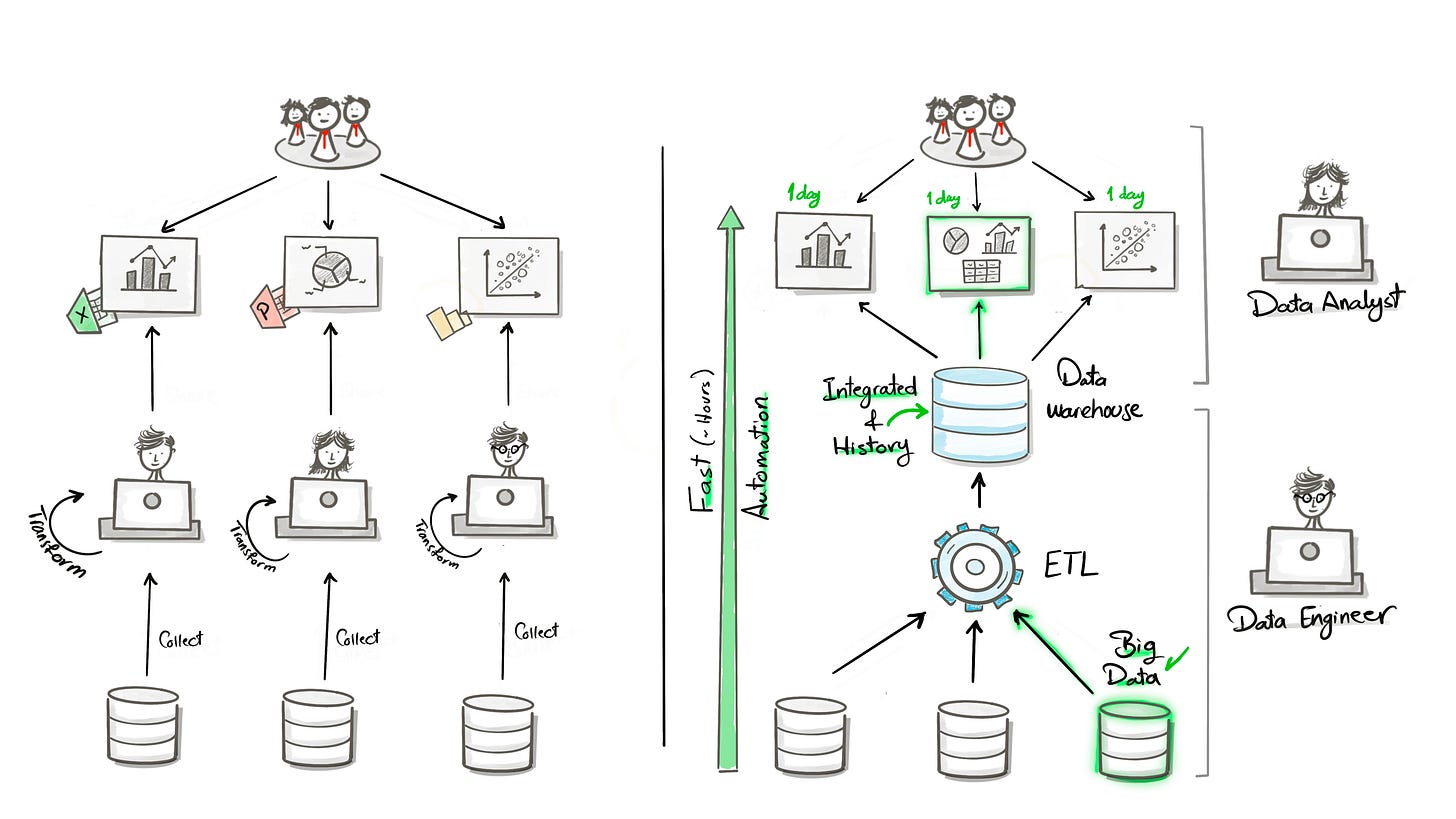Build a Data Warehouse from Scratch
A Full Hands-On SQL Data Warehouse (Data Engineering) Portfolio Project
Happy Monday!
When I join new project, usually one of the hardest tasks that i face is understanding the data and I saw many developers tries to skip this step and i can tell you without understanding the data, it will be really hard to solve any analytical task, the first thing I usually do, I block sometime weekly
Back in 2013, I built my first Data Warehouse project, and let me tell you—it was tough. I searched everywhere for a complete, end-to-end guide, but all I found was theory and small examples that didn’t reflect real-world challenges.
That’s why I created this project—for anyone who wants to build a full Data Warehouse, step by step, just like I do in real projects, covering every challenge I’ve faced along the way.
1. What Is a Data Warehouse?
A Data Warehouse is like a restaurant kitchen. Raw ingredients (data) arrive from different suppliers (systems). Chefs (data engineers) clean, prep, and organize them through the ETL process.
Once ready, the ingredients are used to create dishes (dashboards, reports, insights) that are served to your customers (stakeholders).
2. Why Do We Need a Data Warehouse?
From my experience, managing data without a Data Warehouse is chaos. Teams pull reports from different systems—and end up with conflicting numbers, outdated reports, and endless manual work.
A Data Warehouse fixes this:
Centralized Data: All in one place.
Automation: ETL pipelines handle cleaning and loading.
Consistency: One source of truth.
Speed: Reports ready in hours, not weeks.
3. Data Architecture of the Project
For this project, I use the Medallion Architecture, my favorite because it’s simple, scalable, and practical. The Data Warehouse is divided into three layers:
Bronze Layer: Raw data is ingested as-is from CSV files into SQL Server.
Silver Layer: Data is cleaned, standardized, and normalized for analysis.
Gold Layer: Business-ready data is modeled in a star schema for reporting and analytics.
4. What You’ll Learn from This Project
By completing this project, you’ll gain:
Data Architecture: Design a modern Data Warehouse with the Bronze, Silver, and Gold layers.
ETL Pipelines: Extract, transform, and load data into a structured warehouse.
Data Modeling: Build fact and dimension tables for analytics.
Reporting: Create SQL-based dashboards and insights that businesses can act on.
4. Links
As always, everything is free with no hidden costs.
GitHub Repository:
SQL Data Warehouse Project on GitHub
Let’s build a Data Warehouse together! 🚀
Weekly Wisdom
"Opportunities don’t happen—you create them by showing up, learning, and executing."
I hope this inspires you to take on this project! If you have questions or tips to share, I’d love to hear from you.
Happy querying!
Baraa
Hey friends —
I’m Baraa. I’m an IT professional and YouTuber.
My mission is to share the knowledge I’ve gained over the years and to make working with data easier, fun, and accessible to everyone through courses that are free, simple, and easy!







